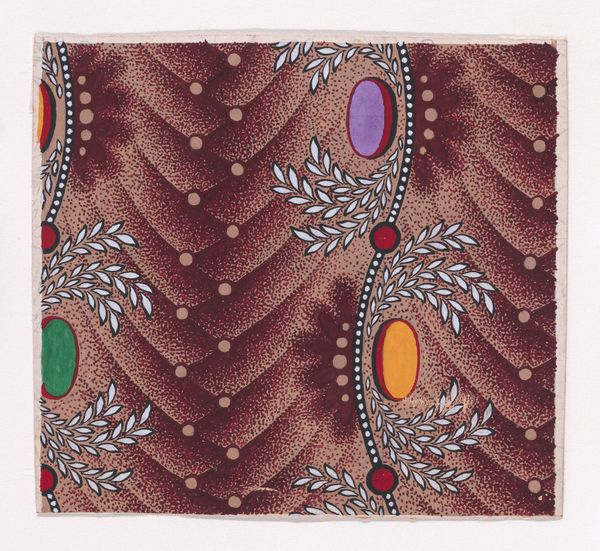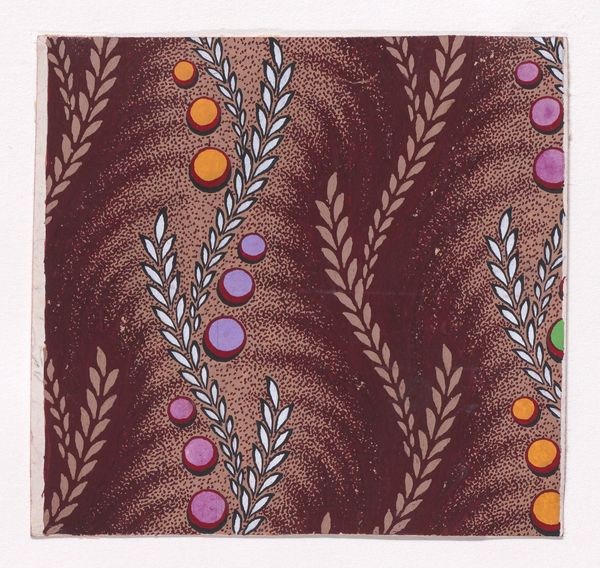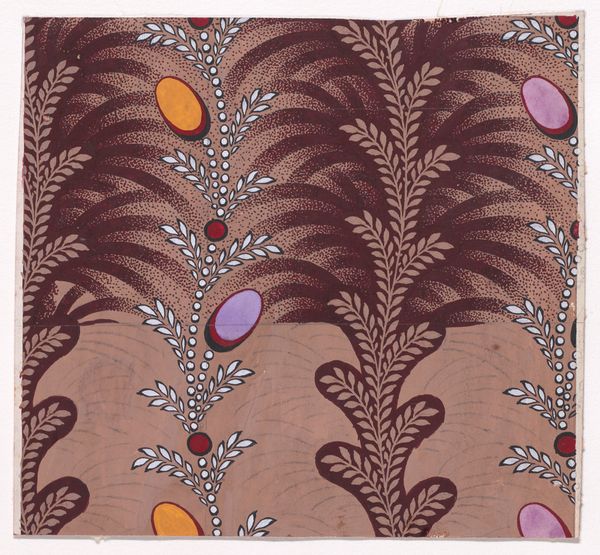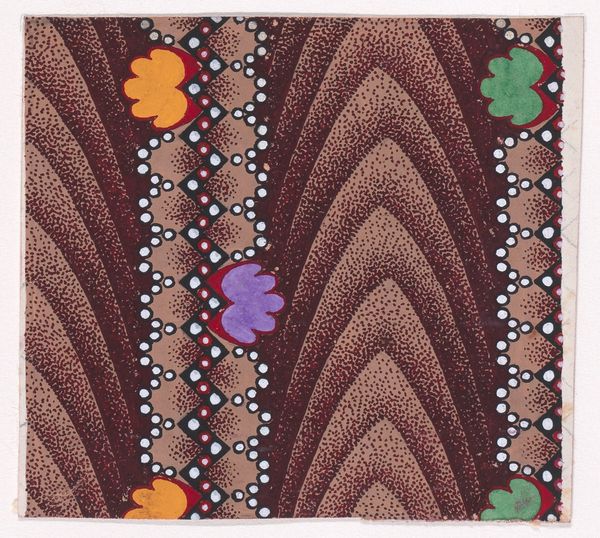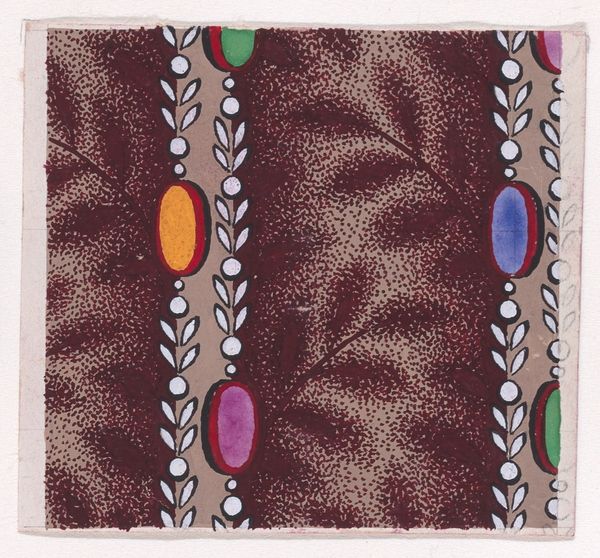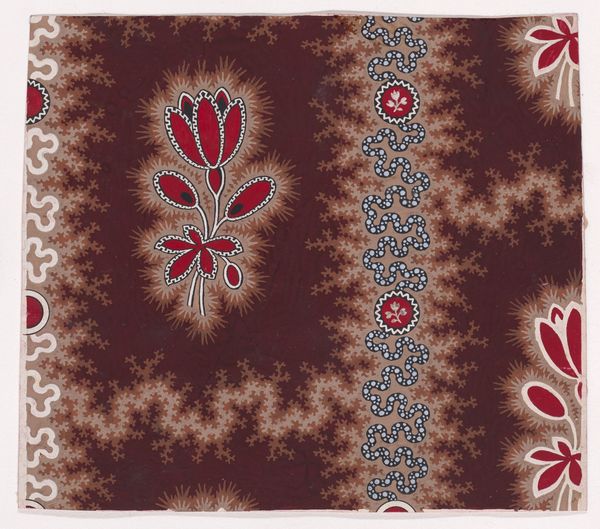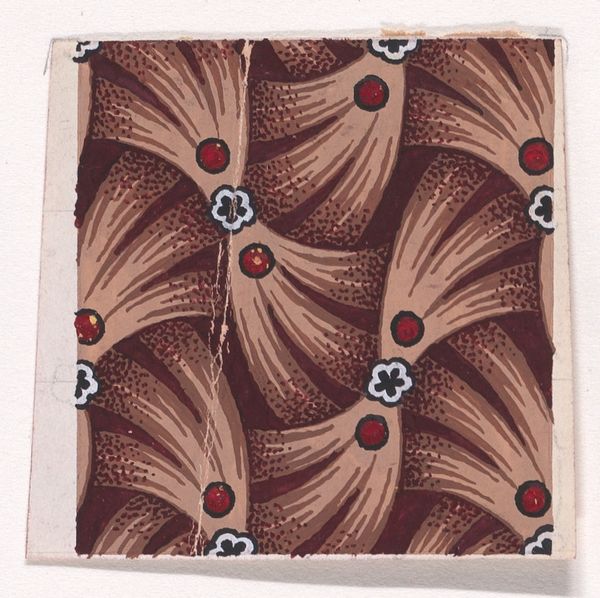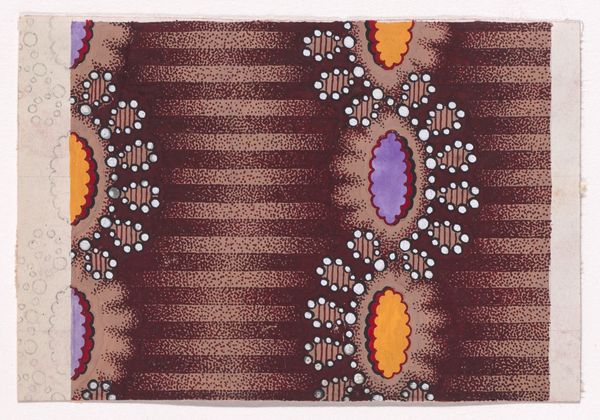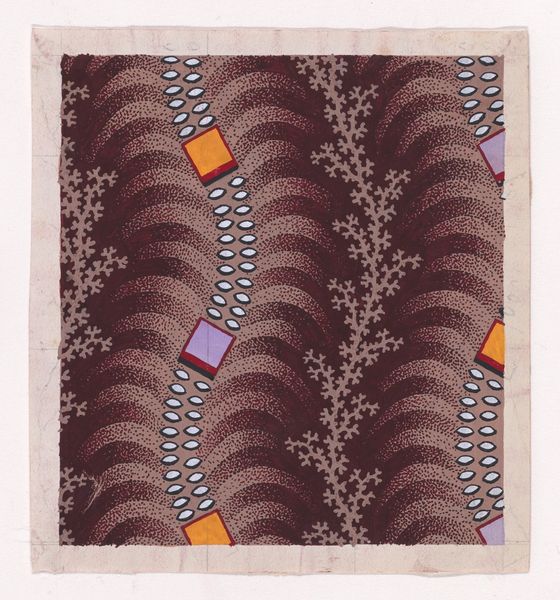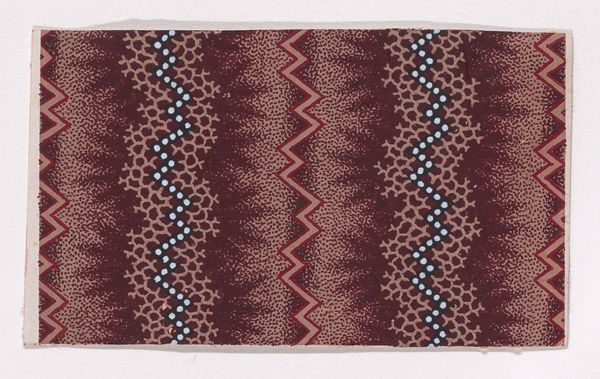
Textile Design with Vertical Garlands of Stylized Leaves, Pearls and Ovals over a Background of Overlapping Scales 1840
0:00
0:00
drawing, print, textile
#
drawing
# print
#
pattern
#
textile
#
geometric
#
romanticism
#
decorative-art
Dimensions: Sheet: 2 3/8 × 3 3/8 in. (6.1 × 8.5 cm)
Copyright: Public Domain
Editor: So, here we have an anonymous textile design from about 1840, currently housed at the Metropolitan Museum of Art. It's described as "Textile Design with Vertical Garlands of Stylized Leaves, Pearls and Ovals over a Background of Overlapping Scales." I'm struck by the sheer amount of labor that must have gone into producing something like this, even at the design stage. What strikes you about this piece? Curator: Looking at the design, what’s most interesting to me is thinking about the social context of its production. The overlapping scales and garland design aren't just aesthetic choices. They represent a specific industrial process, right? A process involving materials, labor, and the market. How do the materials used -- paper, ink or dye-- limit or expand the possibilities for mass production at the time? Editor: That’s interesting; I hadn't considered that the design choices might reflect industrial capabilities! It feels so organic, yet so repetitive... like machine-made nature. Curator: Exactly. The stylized leaves and pearls, which seem hand-drawn, contrast sharply with the more geometric scale pattern. But notice how they are systematically arranged for repetition. Think about the consumer culture this design fed into, the social status that printed textiles would bring. Do you think it challenges the high art/craft divide by implicitly connecting art with the production and consumption of commodities? Editor: Absolutely. I think seeing this design as a blueprint for a commodity really reframes how we should understand art from this period. It highlights the relationship between artistry, industrial processes, and societal consumption habits. It's more than just a pretty picture; it's a social document! Curator: Precisely! It gives us clues to the industrial capabilities, the labour invested, and the targeted consumers. Next time, look at patterns around you: Can we "read" them for production method or labor? Editor: That’s a really valuable point; I will be much more aware of those connections moving forward.
Comments
No comments
Be the first to comment and join the conversation on the ultimate creative platform.
